High Noon the Clock Strikes Noon Again

Even those who haven't seen High Noon will have some thought of what it's about, and no doubt tin hum its University Award-winning theme song "Do Not Forsake Me, Oh My Darlin'." It's a powerful parable about one man standing up for his principals and defending human decency in the confront of encroaching evil, even as those around him plow their backs. As archetype Westerns go, yous can't find one more renowned. It came at the tail-end of the Western'south Golden Age in Hollywood, marking the cease of an era equally the film industry, along with the nation itself, descended into political paranoia.
At the time, around a third of all movies existence made in the Usa, and a quarter of all television shows in production, were Westerns. The Usa seemed to be struggling to affirm a new national identity through mythologising their own past. As a result, the revisionist Western was an exhausted genre and in that location was a need to reflect on history in a way that held a mirror up to contemporary problems.
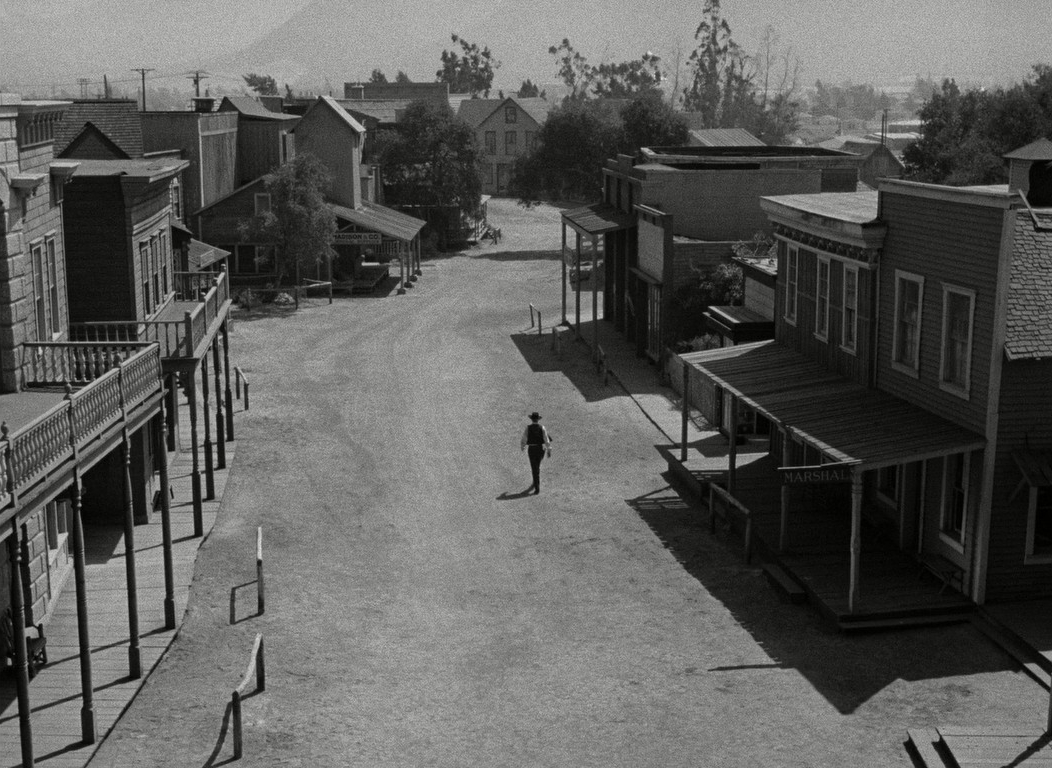
High Apex has been cited every bit the first of a new kind of 'novelistic' Western—more concerned with characters and themes than the historical setting. Whilst the same story could've played out against a Biblical backdrop, a gangster setting, or even as office of a big business Wall Street story, the visually hit opening scene revels in the rich iconography of its genre. The stake mural gives no existent perspective as the land and sky are of the same off-white tone. Trees, horses, and figures expect almost illustrative… as if printed on the pages of a book. Information technology's a series of potent minimalist compositions and this starkness is matched as the initial silence is filled by lo-fi percussion, maybe suggesting the rhythm of equus caballus hooves. A few sparse strums on a guitar ease us into the titles forth with the subdued vocals of Tex Ritter singing the now-famous theme song.
The kickoff face up nosotros meet is a very immature Lee Van Cleef, making his screen debut, equally Jack Colby. He's soon joined by Ben (Chev Woolley) and Jim Pierce (Robert Wilke), both actors well-versed in playing cowboys and henchmen. The trio rides brazenly into the small town of Hadleyville, attracting the attention of the townsfolk, who recognise them as members of the Miller gang. At the dusty station, they ask if the train volition be on time and and so resign themselves for the wait. We see their faces in shut-upwards, before noticing the details of their spurs, hats, and gun belts.
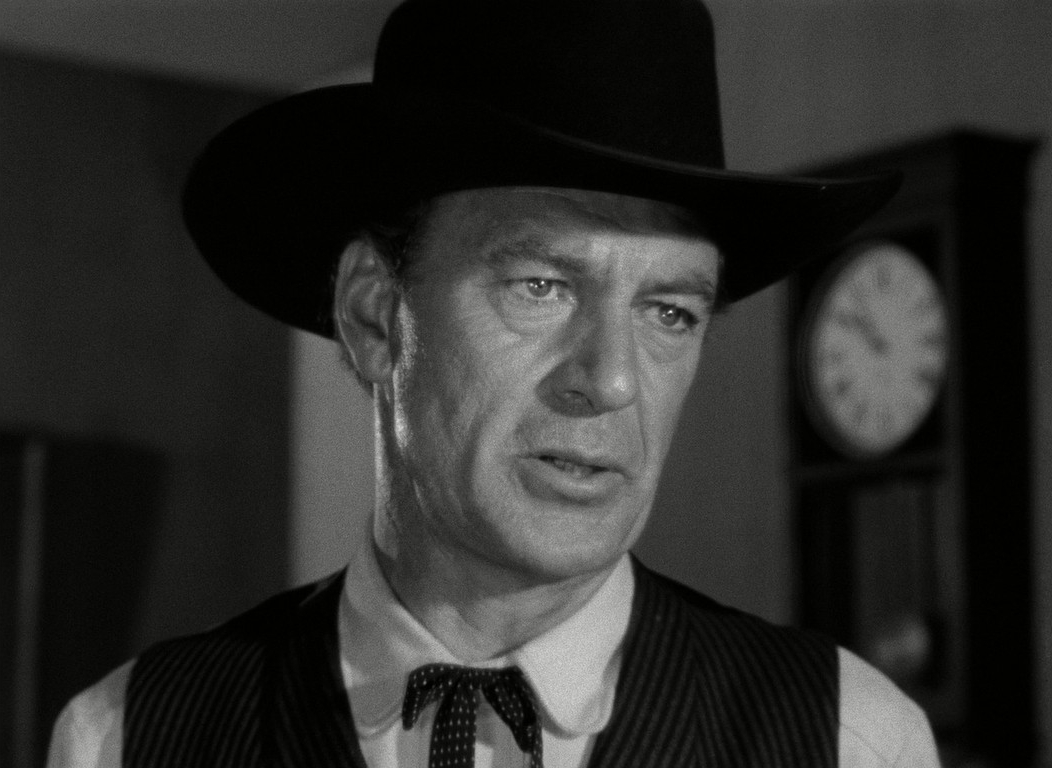
It'southward your typical Wild West station in the dusty plains, with wooden shacks and a water belfry. The location was a stretch of real railroad that was repeatedly used in Westerns and is preserved every bit office of the Railtown 1897 State Historic Park museum at Jamestown, and it'due south all the same occasionally used for filming. The station sequence, which we revisit throughout the film, would be deliberately quoted 16 years afterwards in the opening to an even greater Western—Sergio Leone's In one case Upon a Fourth dimension in the West (1968)—when three men look for another train and the confrontation it volition bring. Incidentally, ane of Leone's gunmen, Jack Elam, also appears briefly in High Apex as the town boozer, sleeping information technology off in a cell.
The Hadleyville Marshall, Will Kane (Gary Cooper) has fabricated the mistake of retiring and getting married on the aforementioned solar day… both events that spell impending doom in the earth of movie theatre! Both are as well archetypal motifs that bespeak transition and alter. Shortly subsequently he's taken his vows with his young married woman, Amy (Grace Kelly, in simply her second big-screen advent), a telegram arrives to let him know that Frank Miller (Ian MacDonald) has been released from jail and volition be arriving on the noon train prepare on murderous vengeance. Kane'due south urged past anybody to leave Hadleyville fast and get on with the honeymoon, simply as he and Amy ride away we lookout their faces change through an assortment of expressions and, with inappreciably a give-and-take spoken, nosotros can encounter that Kane can't run abroad from his duty to protect the boondocks.
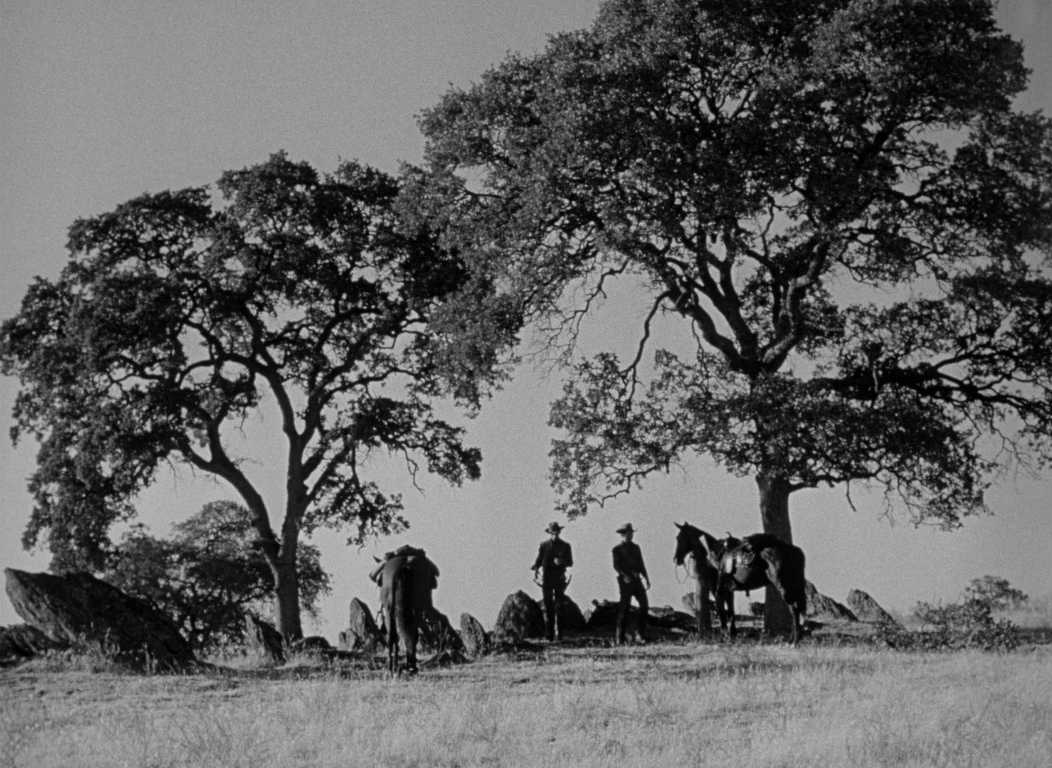
Apparently, Cooper, who was an A-list star throughout the 1940s, liked the script so much he'd agreed to take half his usual salary. He'd but turned fifty and wasn't in great shape, and so knew his days of playing Hollywood heartthrobs were over. What attracted him to the script, also its atypical take on the genre, was Kane's minimal dialogue. He saw an opportunity to emote only through facial expressions and torso language and showcase his character-interim skills.
The script was written by Carl Foreman and began life as an accommodation of The Can Star, a 1947 short story past John Due west. Cunningham, published in Collier's Magazine, that likewise draws from Owen Wister's 1902 novel The Virginian. But every bit Foreman wrote his version for the screen, things brutal apart around him and, as he watched Hollywood succumb to the 'Red Scare', he began altering the story into a clever work of meta-fiction.
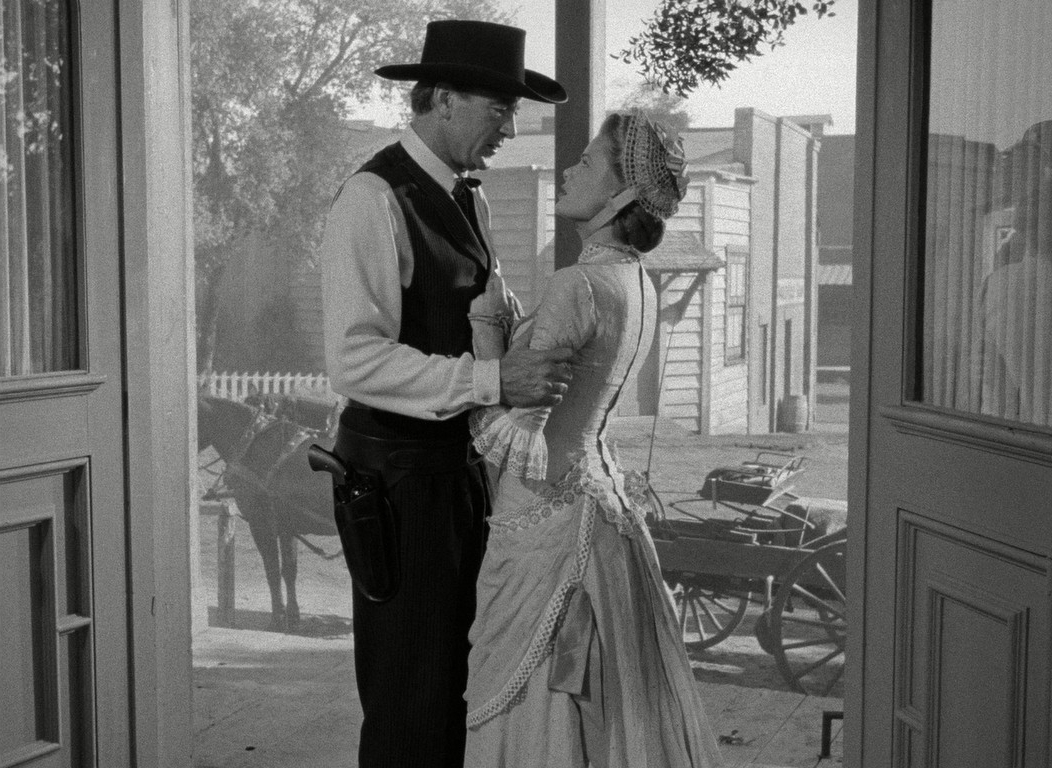
Afterwards World War Two, there was a concerted endeavour past the right-leaning government to influence the media and control the messages it put out. The original short story was published the same year every bit the awkwardly named House Un-American Activities Committee (HUAC) began their infamous investigation of around 80 Hollywood writers, directors, and producers accused of subverting their films to include Communist propaganda.
As there were no crimes involved, nigh of those cooperated, admitted their political alignments and gave upwards names of known Communist Party members. But some saw where this was heading and refused to respond to the HUAC interrogations and, with no criminal charges, they claimed protection under the First Subpoena'south right to privacy, freedom of speech, and freedom of thought. Of those who resisted, 10 were selected to be fabricated examples of and, although they'd cleaved no laws, were fined and given prison sentences ranging from six months to a year. These are now remembered as 'The Hollywood Ten'.
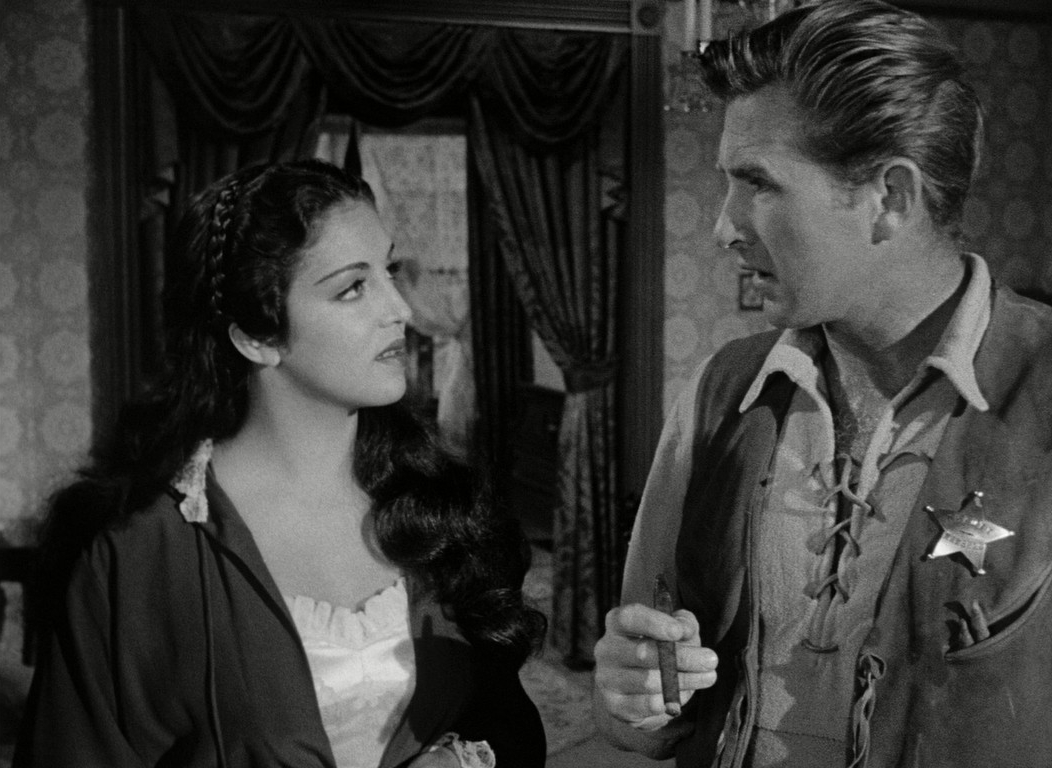
These despicable proceedings had been going on for the four years Carl Foreman had spent honing and pitching his story. By the fourth dimension he had got the production together as an associate producer with Stanley Kramer, and with Fred Zinnemann as director, Foreman himself had come under the scrutiny of the HUAC due to a former association with the Communist Political party. He continued tinkering with the script even every bit the cameras rolled and subtly worked in new scenes and dialogue to reflect the real world around him. The central theme of past deportment coming back to haunt the protagonist and finding the forcefulness to speak truth to power thus takes on a new layer of symbolism.
We learn that years before Frank Miller was sent downwards by Marshall Will Kane and expected to hang but was instead pardoned. Peradventure the near telling scene is when Kane goes to the Approximate (Otto Kruger) to inquire for help in sorting out the potentially deadly situation just, instead of helping, the judge, whilst packing up his ain flag of the union and law books, as well advises Kane to leave town. There'due south a fantastically powerful shot as Frank Miller'due south threats of revenge are recounted. It's simply a irksome zoom on the empty chair where he'd sat 5 years earlier and sworn to render and impale Kane.
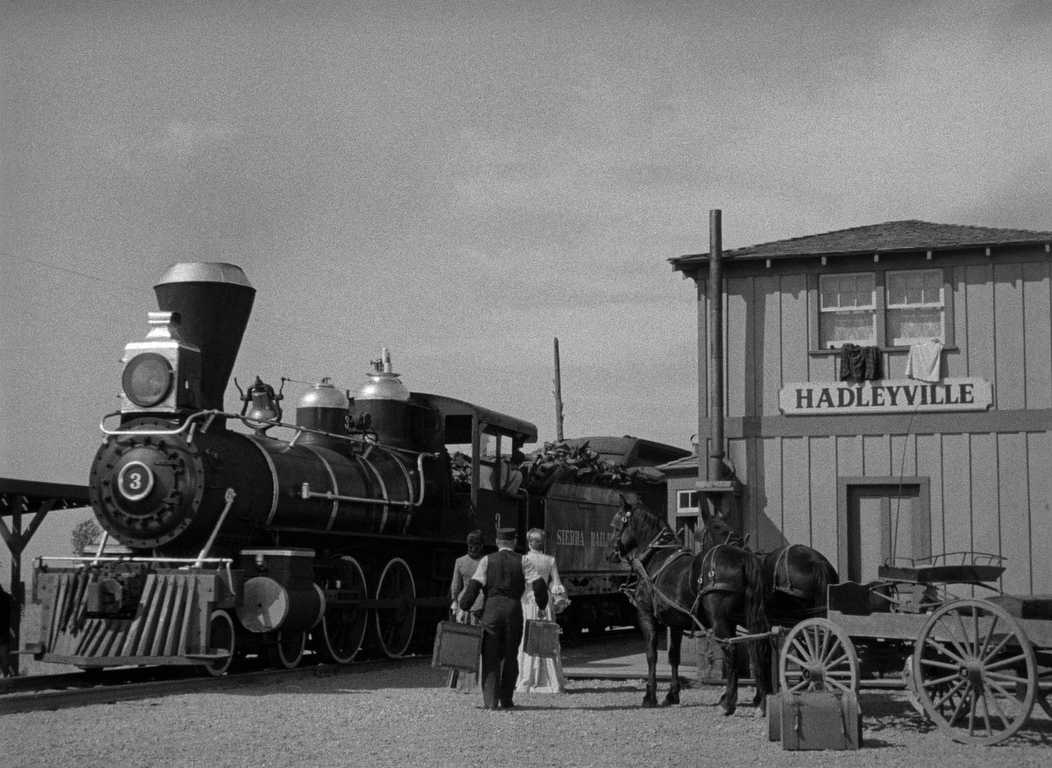
The Marshall soon finds that nobody volition support him in his stand against the Miller gang, who it seems used to run the town before he cleaned things up. Even his new married woman decides to abandon him, rather than compromise her bone-deep pacifist principals as a Quaker. His Deputy, Harve (Lloyd Bridges), too refuses to stand up past Kane unless he guarantees his promotion in place of the new Marshall who'southward scheduled to arrive the side by side solar day. For reasons demonstrated afterwards, Kane refuses this ultimatum as he believes that his young Deputy isn't yet prepare. Harve responds by laying down his ain badge and pistol and walking away.
Information technology seems even those he idea were good citizens observe some excuse to look the other way, stemming from fright or the possibility of personal gain after Kane's death. The hairdresser (William Phillips), who's also the undertaker, does some quick maths and, weighing up the odds, orders 4 coffins… another slice of gallows humour that would be replayed by Leone in his Spaghetti Westerns.
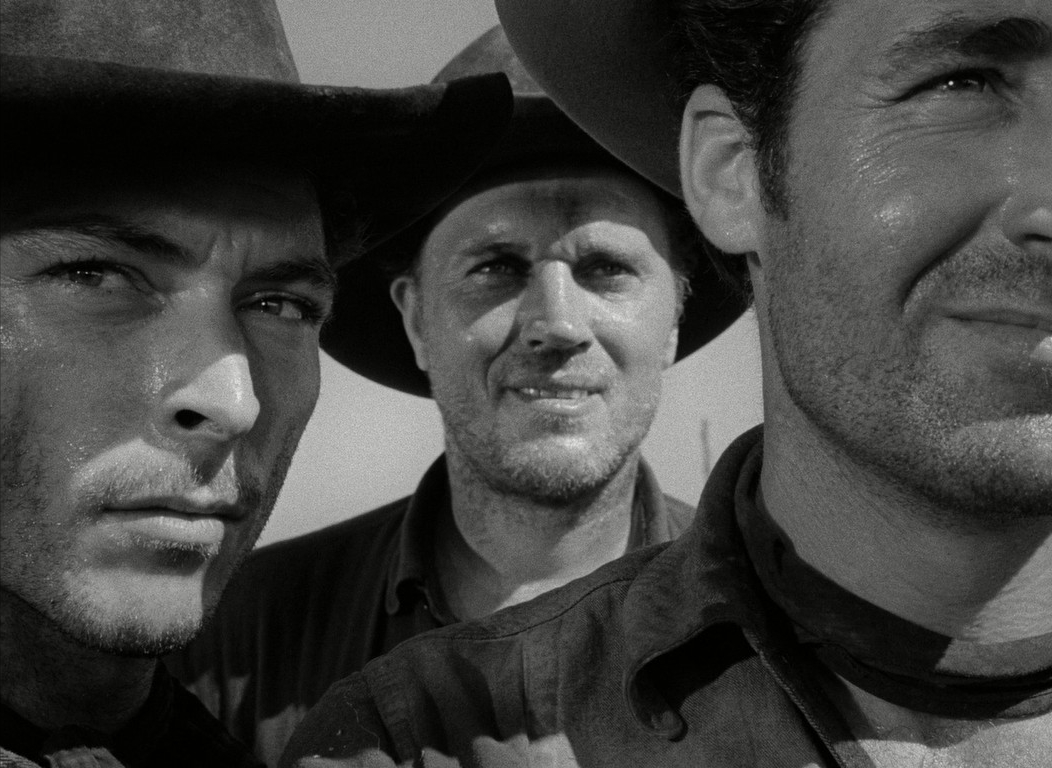
The only other major player to make any difference is Helen Ramírez (Katy Jurado), who was apparently Frank Miller'southward woman one time, then Kane's, and is currently in a human relationship with the Deputy. She'due south a strong independent woman who notwithstanding loves Kane and has a adult female-to-woman chat with Amy that seems to have a delayed effect on her decision to exit town.
Foreman's script is stripped back and deceptively simple. It expects the audition to be paying attention and intelligent enough to grasp the subtleties and fill up in the gaps. Some of the dialogue veers a bit besides shut to melodrama for my liking, and at times there are names mentioned in passing that take a while to sink in. It feels a scrap clumsy here and there but falls into place before the finale. Information technology made better sense on second viewing, although some incongruities become more noticeable. There are a few pocket-size problems with continuity and a couple of anachronisms that would only carp eagle-eyed historians.
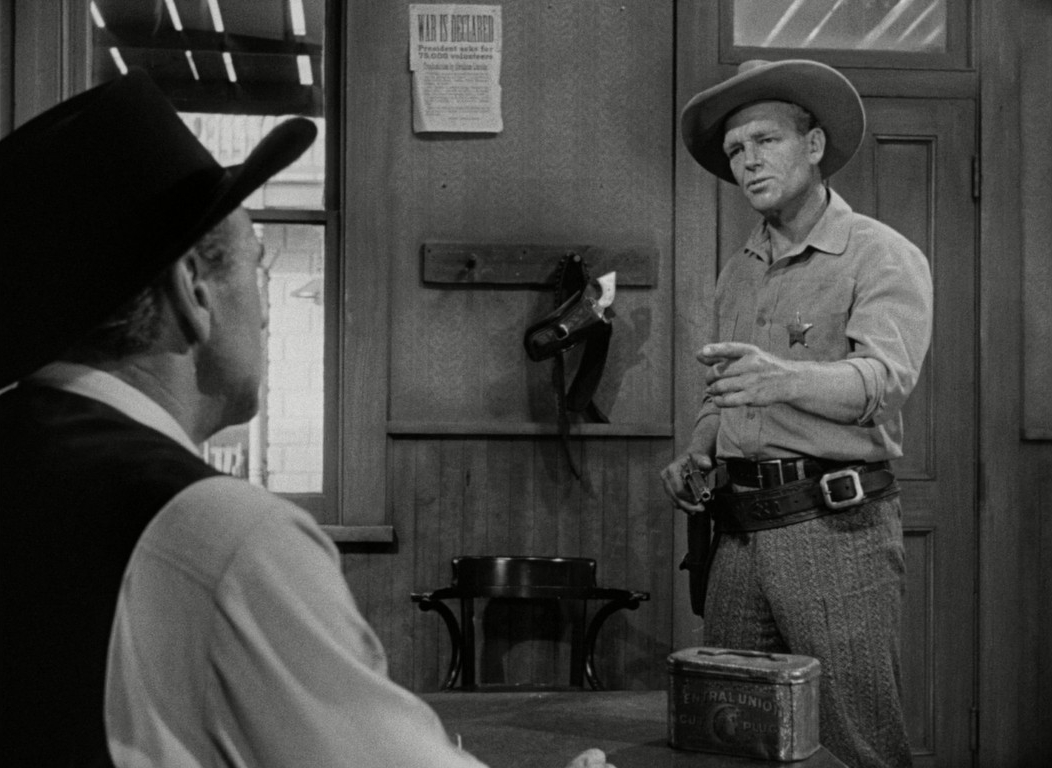
The visual manner reflects the script'due south simplicity. The beautifully composed, though oft stark photography, was in the hands of Floyd Crosby, who had mainly photographed documentaries and was only merely transitioning into feature films. As would be expected, the camerawork is solid and realist, though information technology was Cooper'south own proposition that he wore no makeup, so every line of his face would exist clear in the many closeups and the sweat would glitter in the bright lord's day. Crosby makes adept use of key-lights in many of the close-ups, making Cooper's expressive eyes sparkle as if brimming with barely held-dorsum tears.
The boondocks has a large number of clocks and there's often ane in the groundwork. This helps to highlight the inventive narrative device of having the action play out in real-fourth dimension. When the fateful telegram arrives, after the first 10-minute set-upward, Kane glances at a clock that tells the states he has fourscore-minutes to sort things out—-as well the remaining duration of the movie. Repeated shots of clocks throughout provide a countdown for the audience and evoke a boring tension and edifice urgency. The many signs and notices in the background are also used to great effect and oftentimes seem to be cleverly commenting on what'due south going on!
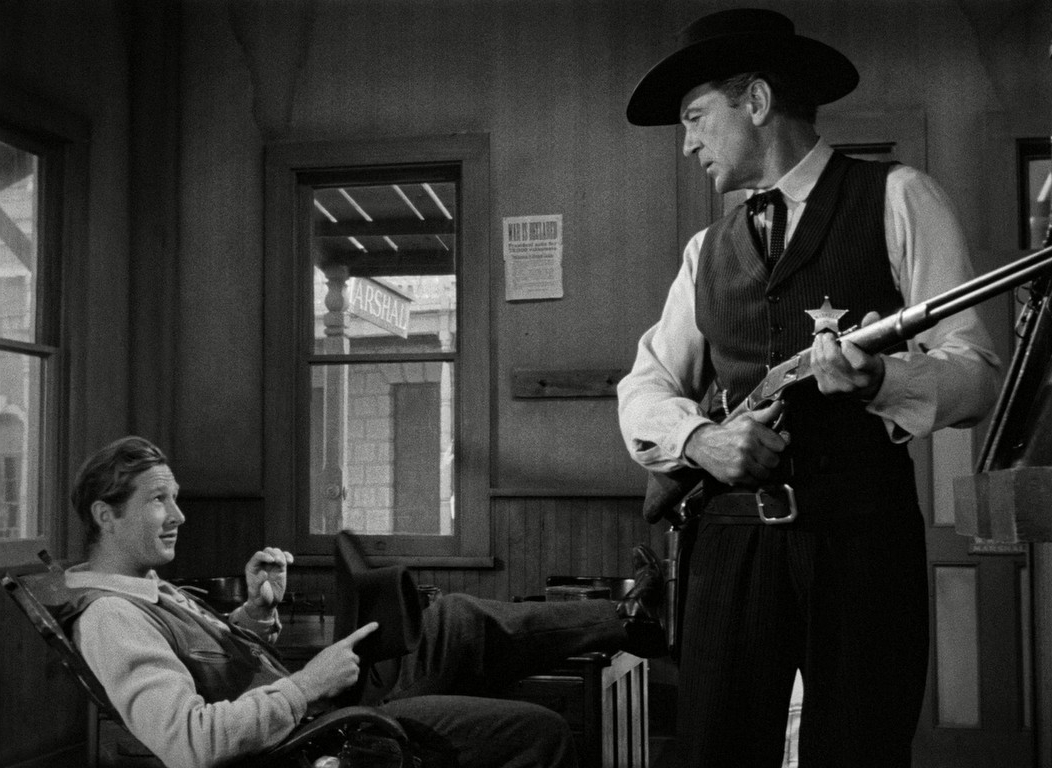
In the terminal scenes, Hadleyville is deserted as Kane walks out alone to face up his destiny, knowing he "can't be leavin'" until he "shoots Frank Miller dead…" This is, however, an unlikely result as the ageing constable faces four professional gunslingers. His nighttime figure is picked out against the pale dust of the main street equally the point of view elevates in an expressionistic crane shot to emphasise his isolation. There'due south no 1 at manus to help or even to comport witness to his dauntless lone stand.
This meaningful shot now seems admittedly essential in its place, but was a concluding-minute innovation. Every bit Zinnemann didn't have the budget, he intended getting the high angle from a balustrade, until he heard that a bigger-upkeep Western, beingness filmed on a neighbouring backlot, had hired a 'Chapman crane'. He had a word with that film'southward managing director, George Stevens, and persuaded him to loan him the crane for an afternoon. That other film was Shane (1953), another game-changing 'novelistic' western.
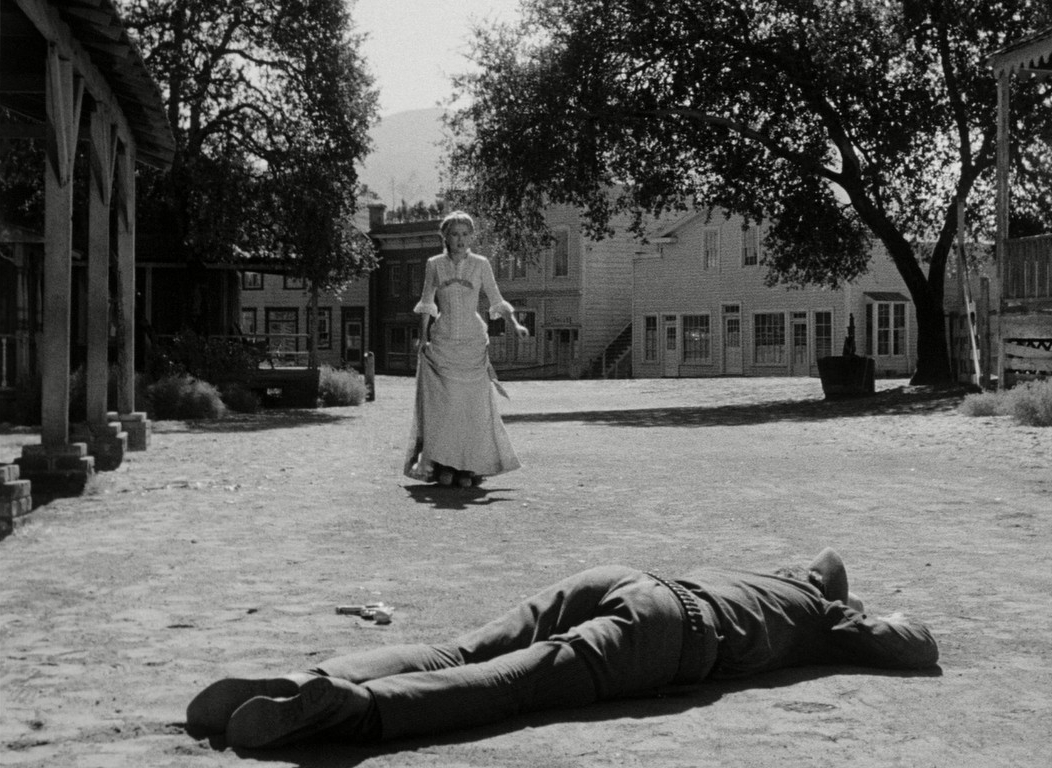
So far, High Apex hadn't provided the thrills usually dictated by the genre template. In that location are no hold-ups, no chases on horseback, no gunfights, just a couple of unglamorous punch-ups. It's finale remedies that with a realist gunfight that itself would prove to be a new genre template.
The biggest irony is that on the aforementioned twenty-four hour period the climactic shoot-out betwixt Kane and the Miller gang was existence filmed, Carl Foreman was brought before the HUAC and considering of his refusal to proper noun names, was treated equally a hostile witness. He was denied whatever abet counsel or legal representation. Simply similar his script'south hero, he had to stand solitary and find his own courage to uphold his principles as a man of conscience.
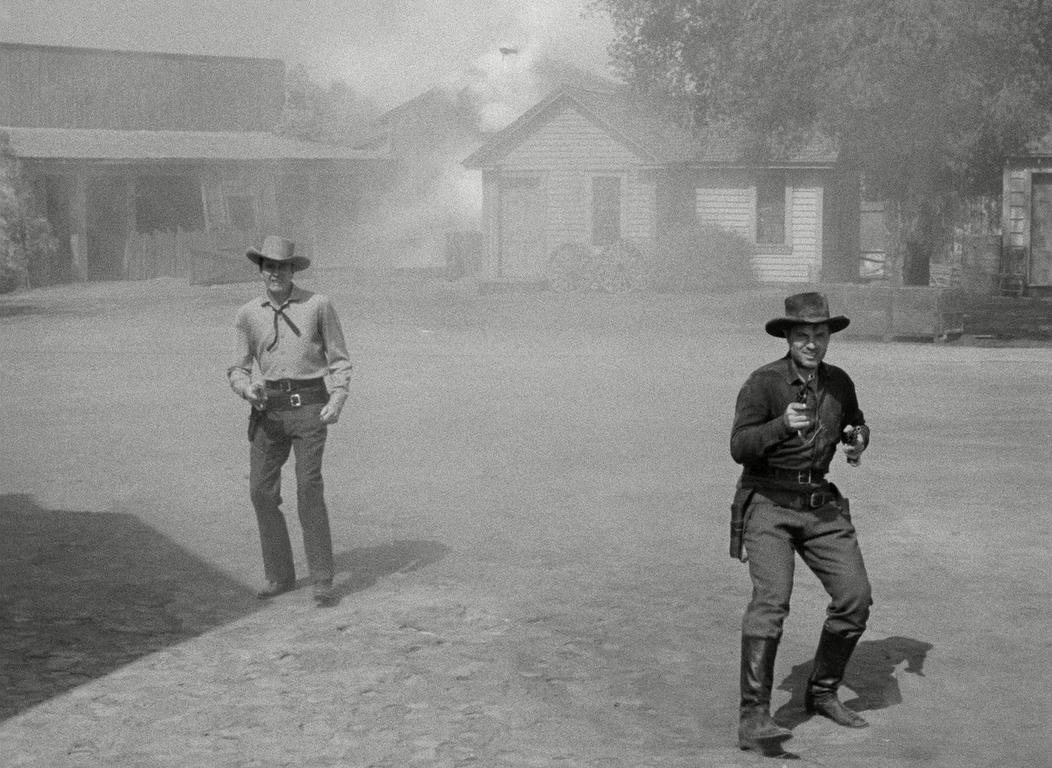
As a result, even his studio pals, Zinnemann and Kramer, could exercise piddling to aid him. His associate producer credit was removed, along with its fee, though his writers' credit remained, and Kramer did manage to settle a severance payment. But that was the limit of the support he could get when the HUAC gang rode into town and inverse Hollywood into a bigger, worse parallel to Hadleyville. Having just about seen the production completed, Foreman was blacklisted, which effectively derailed his Hollywood career.
At the time, nobody would've expected this film to leave such an enduring legacy. Subsequently such a rushed and beleaguered shoot, it was a surprise success, though information technology divided critics of the day. John Wayne, who'd turned down the atomic number 82 function of Kane, hated it with a vengeance and called it "the virtually un-American thing I've ever seen in my whole life." Although it didn't evangelize what audiences expected of a Western, information technology was a box role hit and brought in $3.4M from its initial theatrical run in '52, hands covering its B Movie budget of $730,000. It just goes to bear witness, audiences don't e'er know what they want!
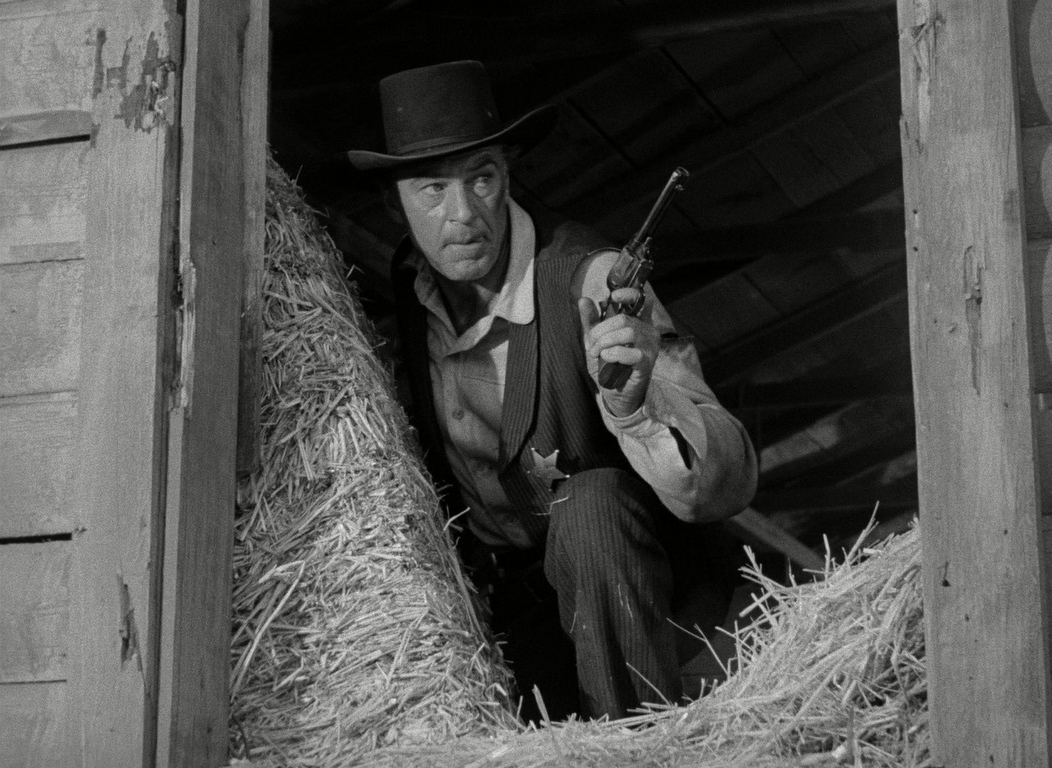
It was nominated for seven Academy Awards and won four of them: 'Best Actor in a Leading Role' went to Gary Cooper, Elmo Williams and Harry W. Gerstad shared 'Best Film Editing', Dimitri Tiomkin won two statuettes, the first for 'Best Score' and some other for 'Best Song' (which he shared with Ned Washington for "The Ballad of High Noon", a.k.a "Do Not Forsake Me, Oh My Darlin'".) Information technology'south rather telling that the remaining three nominations were 'Best Managing director', 'Best Motion-picture show', and 'Best Screenplay', which would've gone to director Fred Zinnemann, producer Stanley Kramer, and writer Carl Foreman, respectively. Peradventure their recent run-ins with HUAC had impacted their chances. Katy Jurado was the commencement Mexican extra to win a Golden Earth Honour, for 'Best Supporting Actress' as Helen Ramírez, and some other Golden Globe went to Floyd Crosby for his 'Cinematography'.
In a prissy little twist of fate, Gary Cooper was filming away when the Oscar ceremony was held. So he asked his friend, John Wayne, to collect the 'Best Histrion' award on his behalf! I wonder if he was just 'rubbing it in'…
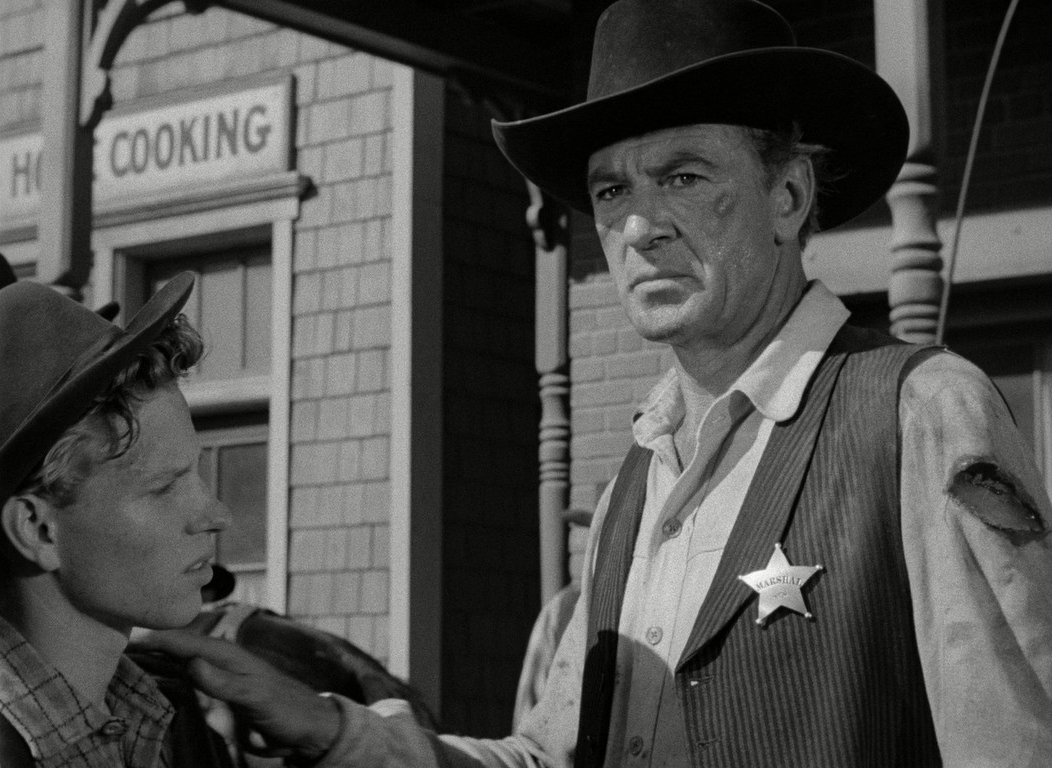
High Noon was amid the first films selected by the Library of Congress for preservation in the U.s.a. National Film Registry as "culturally, historically, or aesthetically significant". The American Picture show Institute (AFI) listed it equally the 2d greatest western of all time, sandwiched between John Ford'due south archetype The Searchers (1956) at number i and Shane in tertiary place. I similar the moving picture a lot. It'southward undeniably a classic and hugely influential. But for me, at that place are amend Westerns, though I'd have to concede there may not have been if it wasn't for Loftier Apex!
Gary Cooper had formed a friendship with Foreman and so he tried to assistance him form an contained company and signed upwards to star in its first picture show. Warner Bros. threatened to renege on their contract with Cooper on 'moral' grounds if he continued to back up the venture. And so, but like Kane walks away in disdain, Foreman walked away from the US and resettled in London where he continued to write under pseudonyms.
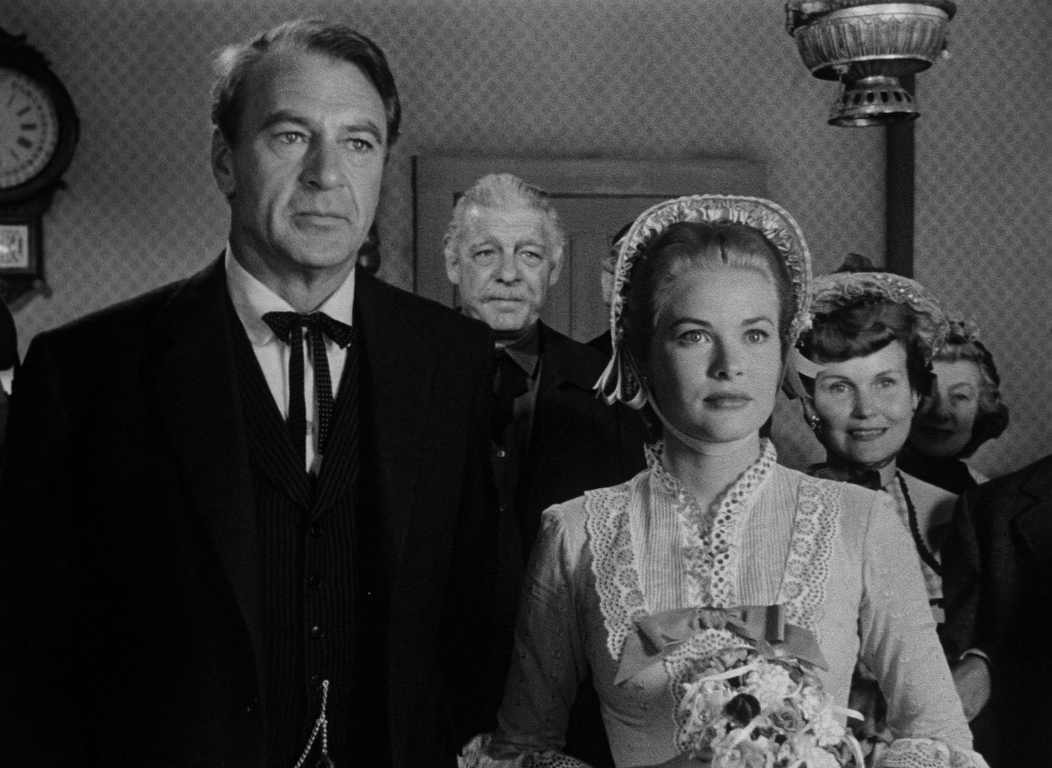
He and Michael Wilson, some other blacklisted writer, wrote the script for The Span Over the River Kwai (1957), which won them an Oscar they were unable to collect. Foreman's screenplay for The Guns of Navarone (1961) was also Oscar-nominated. He became the president of the Writers Lodge of United kingdom of great britain and northern ireland, received a CBE in 1970 for services to the film industry, and eventually returned to piece of work in the U.s.a. on the board of the AFI. The statuettes for Bridge Over the River Kwai were finally given, posthumously, to the writers' widows.
In the telemovie, High Noon: The Clock Strikes Apex Again (1966), Peter Fonda played Volition Kane Jr., who arrives in Hadleyville on the noon train 20 years on, to seek vengeance against the sons of Frank Miller for the murder of his male parent. In 1980 there was some other telemovie sequel, Loftier Noon, Part II: The Return of Will Kane, scripted by offense novelist Elmore Leonard and starring Lee Majors every bit Kane. Tom Skerrit played the part in a TV remake in 2000, besides.
It has inspired several reworkings over the years. The thought of a High Noon in space had been the starting point for Peter Hyams when developing Outland (1981) with Sean Connery as an off-globe lawman. Cult 1960s TV serial The Prisoner references the picture with its fundamental premise of ane man struggling to maintain his individual integrity and well-nigh explicitly in the two consecutive episodes: "Do Not Abdicate Me Oh My Darling" and "Living in Harmony".
The references and parallels, intended or not, in many other movies are too numerous to ponder here… A new cinematic treatment has been in evolution since 2016, and last year Stanley Kramer's widow, Karen Sharpe Kramer, announced that the project was back on runway with writer-director David L. Hunt at the captain.

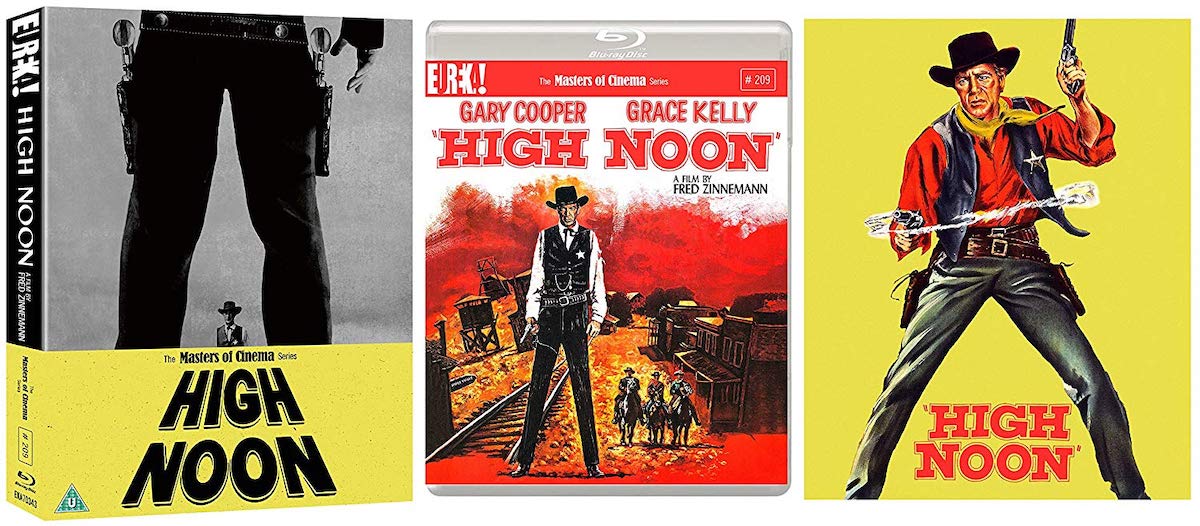
Express Edition Blu-ray Special Features:
- Limited Edition Hardbound Slipcase [3000 copies] .
- A Express EDITION 100-page collector's volume featuring new writing on the pic; the original short story The Tin Star by John Due west. Cunningham. This is a really handsome and weighty booklet with excerpts from writings and archival manufactures, including interviews with director Fred Zinnemann. There are reproductions of the lovely fully-painted colour artwork and promotional posters and plenty of behind the scenes stills and publicity shots. There's an extensive new essay by Philip Kemp on The Ability and Politics of High Apex, a retrospective written in 1986 by Richard Combs, Picture Lecturer at the National Film and Television School, and my favourite article is the clock-watchers analysis of the film, again by Richard Combs, that isolates the many shots of clocks and discusses the intentional (?) ambiguities conjured by the pinch and extension of screen fourth dimension every bit information technology pretends to be existent-fourth dimension…
- 4K Digital Restoration . This new Blu-ray really celebrates the starkly crisp cinematography and does its best to bring out the details in the shadows whilst compensating for any glaring white-out, though I kinda miss the film grain…
- Optional English subtitles for the deafened and difficult-of-hearing .
- Brand new and sectional audio commentary past historian Glenn Frankel, author of High Apex: The Hollywood Blacklist and the Making of an American Classic . This lonely makes the purchase worthwhile for any cineaste and fan of the film. Frankel places the production in its historical context and continually point out the parallels to existent off-screen events. At present more than ever, that nighttime period of oppressive history, in a supposedly civilised nation, needs to be held upwards to the light.
- Brand new and exclusive sound commentary past Cinema and Western authority Professor Stephen Prince . Does exactly what a commentary should do and enhances the viewing experience. Although sometimes simply describing what we're seeing, Prince points out interesting details we may have missed and throws in enough of trivia as well every bit the usual cast biographies and valid technical observations. He also draws comparisons with other classic Westerns and helps us to read the symbolism at a deeper level. He does a great job and keeps things fresh, which isn't an easy task, given the amount that'due south already been said and written almost such a classic.
- New video interview with flick historian Neil Sinyard, author of 'Fred Zinnemann: Films of Graphic symbol and Conscience' . A professor in the department of Film Studies, Academy of Hull, he really knows his stuff! He goes into the sort of detailed in-depth analysis that fans of the film and those interested in filmmaking really want to know. He outlines the making of the film and tells united states of america almost editorial decisions and how the song affected cutting choices and helped ensure the pic's success when rerecorded by Frankie Lane. He besides points out that its lyrics act to externalise Kane's inner feelings without resorting to dialogue that would accept been cliched. He just most covers all the important details and answers questions you wouldn't think to ask! He's too in a perfect position to comment having interviewed several of those involved with the production including director Fred Zinnemann and editor Elmo Williams.
- A 1969 audio interview with writer Carl Foreman from the National Moving-picture show Theatre in London . In which he finally gets to put his side of the story across! Though this is sometimes contrary to what Fred Zinnemann has said!
- 'The Making of Loftier Noon'. An archival 22-minute 1992 documentary on the making of the flick hosted by Leonard Maltin which, although a little frenetic in style, gives some good insight into the product, including the original blocking plans for how cameras and actors would interact on prepare. It also includes unrestored clips, if yous desire a comparison with this new 4K edition.
- 'Inside High Noon'. A 50-minute in-depth celebration and Making Of documentary, compiled in 2003, which opens with Beak Clinton telling us how he drew strength from its example when serving as President of the U.s.. Narrated past Frank Langella, the documentary starts by tracking how the term 'High Noon' has entered into global phraseology meaning a moment of reckoning when ane'south integrity will be sorely tested. And so it presents a video essay that included newspaper clippings from the fourth dimension in an attempt to rail its wider cultural impact.
- 'Behind High Noon'. A 10-minute tribute filmed for its 50th ceremony in 2002, introduced by Maria Cooper (Gary Cooper'southward girl) and with contributions from Carl Foreman's son Jonathan (who has a constabulary caste and wrote as a movie critic for The New York Times earlier he became a journalist for the UK correct-leaning press, writing for the Daily Mail and Standpoint), Grace Kelly's son, Prince Albert of Monaco, and Fed Zinnemann's son Tim, a producer and prolific assistant director.
- Theatrical Trailer .

Bandage & Crew
director: Fred Zinneman.
writer: Carl Foreman (based on 'The Tin Star' by John W. Cunningham).
starring: Gary Cooper, Thomas Mitchell, Lloyd Bridges, Katy Jurado, Grace Kelly, Otto Kruger, Lon Chaney Jr. & Henry Morgan.
cervantezmarsureend.blogspot.com
Source: https://www.framerated.co.uk/high-noon-1952/
0 Response to "High Noon the Clock Strikes Noon Again"
Enregistrer un commentaire